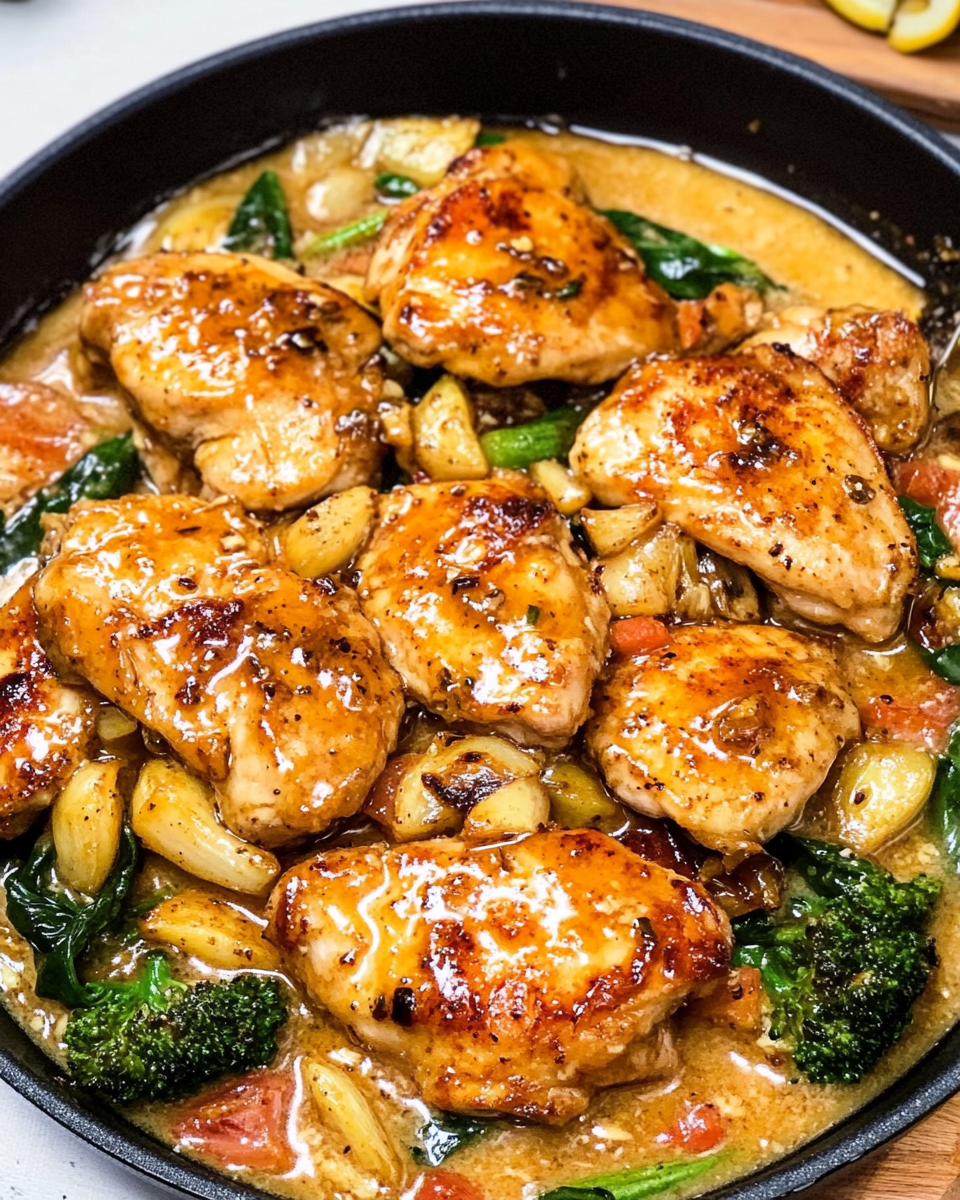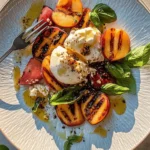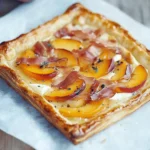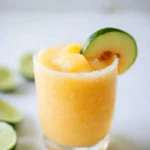A deliciously savory-sweet dish, Baked Honey Garlic Chicken features tender chicken thighs glazed in a sticky honey garlic sauce. It’s perfect for a quick weeknight dinner or a flavorful meal prep option, offering a perfect balance of sweetness, garlic, and soy.
FULL RECIPE
Ingredients
- 6 boneless, skinless chicken thighs
- 1/3 cup honey
- 1/4 cup low-sodium soy sauce
- 1 tablespoon apple cider vinegar
- 4 garlic cloves, minced
- 1 tablespoon olive oil
- 1/2 teaspoon ground black pepper
- 1/2 teaspoon salt
- 1/2 teaspoon paprika
- 1 tablespoon cornstarch
- 1 tablespoon water
- Chopped green onions (optional, for garnish)
- Sesame seeds (optional, for garnish)
Directions
- Preheat oven to 375°F (190°C).
- Season chicken thighs with salt, pepper, and paprika.
- Heat olive oil in a skillet over medium heat. Sear chicken thighs for 2-3 minutes per side until golden brown.
- In a small bowl, whisk together honey, soy sauce, vinegar, and minced garlic.
- Transfer seared chicken to a baking dish. Pour the honey garlic sauce over the chicken.
- Bake for 25-30 minutes or until chicken is cooked through and reaches an internal temperature of 165°F (74°C).
- Remove chicken from baking dish. Pour remaining sauce into a saucepan and bring to a simmer over medium heat.
- In a small bowl, mix cornstarch with water. Add to the sauce and cook until thickened, about 2-3 minutes.
- Return chicken to the thickened sauce or drizzle sauce over plated chicken.
- Garnish with green onions and sesame seeds if desired.
Nutritional Information
- Calories: 280 per serving
- Protein: 24g
- Carbohydrates: 18g
- Fat: 12g
- Saturated Fat: 2.5g
- Sugar: 14g
- Sodium: 520mg
- Fiber: 0.5g
History and Origin of Honey Garlic Chicken
Honey Garlic Chicken is a dish that beautifully combines sweet and savory flavors, popularized in many Asian-inspired cuisines, particularly Chinese and Korean. The harmony of honey’s natural sweetness with garlic’s pungency has been cherished for centuries, with variations appearing in traditional cooking styles throughout East Asia. Over time, it has evolved into a beloved comfort food around the world, especially in Western countries where baked or pan-fried versions became common adaptations for home cooks.
The Science Behind the Flavor Combination
The magic of honey garlic lies in the contrast and complement between its ingredients. Honey provides sweetness and a sticky texture, while garlic contributes a sharp, aromatic punch that balances the dish. The Maillard reaction during cooking deepens the flavor by caramelizing the honey and browning the chicken, enhancing complexity. Soy sauce adds umami, while vinegar or acid in the sauce cuts through the sweetness, preventing it from becoming cloying.
Health Benefits of Garlic and Honey
Garlic is well-known for its health properties, including its ability to boost the immune system, reduce blood pressure, and offer anti-inflammatory effects. Honey is rich in antioxidants and has antimicrobial qualities. Together in this recipe, they not only create a delicious sauce but also provide nutritional perks that may contribute to overall wellness.
Choosing the Right Cut of Chicken
Using boneless, skinless chicken thighs is ideal for this recipe because they stay tender and juicy during baking. Thighs have more fat than breasts, which helps retain moisture and absorb the flavors of the sauce. However, you can substitute with chicken breasts if preferred, keeping in mind that they may cook faster and can dry out if overbaked.
Why Baking Is Preferred Over Frying
Baking the chicken allows the sauce to thicken and caramelize gently around the meat, creating a luscious glaze without the extra oil from frying. This method is healthier and simpler, reducing cleanup while producing tender results. Baking also enables the chicken to cook evenly and absorb the honey garlic flavors thoroughly.
How to Achieve the Perfect Glaze
The key to a shiny, sticky glaze is the balance of honey and cornstarch in the sauce. Simmering the sauce after baking allows it to thicken properly and coat the chicken perfectly. Avoid adding too much cornstarch at once to prevent a gummy texture. Stirring continuously ensures an even consistency.
Variations to Customize Flavor
This recipe is highly adaptable. Adding fresh ginger to the sauce can give it a warming kick. Red pepper flakes or sriracha add heat for those who enjoy spice. For a citrus twist, a splash of orange or lemon juice brightens the overall profile. You can also swap soy sauce for tamari or coconut aminos to make it gluten-free.
Pairing Suggestions
Honey Garlic Chicken pairs wonderfully with simple sides like steamed rice, quinoa, or roasted vegetables. Light and fresh salads or sautéed greens balance the richness of the dish. For a heartier meal, serve with mashed potatoes or noodles tossed in a light sesame dressing.
Meal Prep and Storage Tips
This chicken holds up well for meal prep. Store leftovers in an airtight container in the fridge for up to four days. Reheat gently in the oven or microwave to maintain moisture. The sauce may thicken in the fridge; adding a splash of water or broth when reheating can help loosen it.
Dietary Considerations
While delicious, this recipe contains honey and soy sauce, which some may need to avoid due to dietary restrictions or allergies. To make it suitable for a low-sugar diet, reduce the honey or substitute with a sugar-free sweetener like erythritol. Low-sodium soy sauce can help reduce salt intake.
Cultural Adaptations and Popularity
Different cultures have put their spin on honey garlic chicken, incorporating local ingredients and techniques. In Korean cuisine, a similar concept appears as dakgangjeong, which is deep-fried and coated with a sticky sauce. In Western home kitchens, baked versions offer a convenient and less oily option, contributing to the dish’s widespread appeal.
Cooking Equipment Recommendations
While this recipe requires minimal equipment, using a cast-iron skillet for searing enhances the crust on the chicken. A good quality baking dish helps the chicken cook evenly. For thickening the sauce, a small saucepan is necessary. Having a reliable meat thermometer ensures perfectly cooked chicken every time.
Common Mistakes to Avoid
Overcooking the chicken can result in dryness, so monitoring internal temperature is essential. Adding honey directly to high heat without dilution may cause it to burn. Skipping the sear step reduces flavor depth. Lastly, not thickening the sauce after baking can leave it watery and less appetizing.
How to Make It Kid-Friendly
This dish is naturally appealing to kids because of its sweet flavor. To make it more kid-friendly, reduce or omit any spicy additions. Serving it with familiar sides like rice or mashed potatoes can help picky eaters enjoy it. Small portion sizes and mild seasoning ensure it suits younger palates.
Sustainability and Ingredient Sourcing
Choosing organic or free-range chicken supports sustainable farming practices and often yields better flavor. Using raw, unprocessed honey is more natural and nutritious. Opting for low-sodium and organic soy sauce reduces additives and environmental impact. Local sourcing of garlic and fresh produce benefits community farmers.
The Role of Vinegar in the Recipe
Apple cider vinegar or other mild vinegars brighten the sauce and balance sweetness. Vinegar’s acidity also helps tenderize the chicken during baking. Too much vinegar can overpower the dish, so it’s essential to use just the right amount to enhance rather than dominate the flavor.
How to Present and Serve
For a visually appealing presentation, garnish with chopped green onions and toasted sesame seeds. Serving the chicken whole or sliced reveals its juicy interior coated with glossy sauce. Pairing with colorful vegetables adds contrast and makes the meal inviting on the plate.
Making It Gluten-Free
Regular soy sauce contains wheat, so for gluten-free cooking, replace it with tamari or coconut aminos. This swap preserves the umami flavor while making the dish suitable for those with gluten intolerance or celiac disease.
Incorporating Additional Vegetables
To add more nutrition, bake or sauté vegetables like broccoli, bell peppers, or snap peas alongside the chicken. These vegetables soak up the sauce and add vibrant texture and color to the dish, turning it into a more complete one-pan meal.
Time-Saving Tips for Busy Cooks
Using pre-minced garlic or garlic paste saves prep time. Preparing the sauce in advance and marinating the chicken briefly speeds up cooking. Baking instead of frying reduces active cooking time and cleanup, making this recipe ideal for weeknight dinners.
Conclusion
Baked Honey Garlic Chicken is a versatile and flavorful dish that combines the best of sweet and savory elements with simple preparation. Its balance of rich garlic, natural honey sweetness, and umami soy sauce creates a crowd-pleasing meal that works for busy families and casual dinners alike. The recipe’s adaptability allows for numerous variations to suit dietary needs and personal preferences, while its method of baking ensures juicy, tender chicken with minimal effort. Whether served over rice, alongside roasted veggies, or enjoyed as leftovers, this dish brings comfort and satisfaction to the table with every bite.






